
A simple black boot, comfortable in any and every environment imaginable. It’s so simple it took us four years to get right.
One boot.
This is the tale of the details to the details, the why’s — all of which began from the well earned tribal knowledge of boots that’s passed down from generation to generation, in Special Forces.

One first point before we dig in. Pictured above, those boots were brand new out of the box 20 miles prior, when we stepped off into some of the most arduous terrain in all of Vietnam. No hotspots, no blisters at the end of the day. Though the beers did taste really good by the end, we had earned it.
There’s no break in time with MACV-1, but they get better with age, and the memories you put into them. That’s why we say MACV-1 is Ready When You Are.

Lightweight
“Lightweight like a running sneaker, tough like an assaulter’s boot.” That was our mission and we were religiously committed to it. At under 14oz (28 oz/pair), MACV-1 is lighter than any footwear of its kind, ever.
So, how?
Less is more and more is lazy. It’s easy to horde features on any piece of footwear but especially a boot, because there’s more of it. Marketers sell you on features, so the features get added. One example: to double the weight of the sole, just add rubber ridges everywhere for “more durability” – then advertise that and put a big yellow logo on it. But if the “more durability” is not in the right place then you don’t need it, and you’ve wasted precious ounces on unnecessary bulk. And you have to live with that one step at a time. We took the opposite approach of the marketers and removed everything: every stitch, every pattern piece, every gram of rubber, everything that wasn’t absolutely necessary for Special Forces performance.
The first thing everyone says when they hold MACV-1 for the first time is “damn, that’s light.” And then they test it out and because it has no break in time they say “damn, it works too.” And that’s a win.


Tough
Full grain Challenge Leather™ leather and Special Forces grade materials and triple-stitched stress points, a durable EVA midsole and All-Terrain Outsole that thrive in all kinds of terrain, but that’s not even most of the story.
In Special Forces, adaptability is everything. If your boots or your ruck or your weapon fails, it’s a life or death kind of thing. And in the choice of what boots to wear, it’s a trade-off with the weight you’re willing to attach to each foot and the speed you need.
One truth, though, is absolute: no matter the terrain or the situation, you want your boots to be as light as possible and you want them to never fail. We spent four years focused on each of the major components of this one pair of boots and how they function, how they’re constructed, together: the upper, the midsole, the bottoms, and the insert. We ruthlessly cut features and weight and the outcome is a lethal combination of lightweight and tough. MACV-1 is simple, tough, and it works in any terrain Special Forces operate in – namely, all of them.


Supportive
The MACV-1’s Workhorse Insert™ is not your normal worthless flat cheap single foam insole. On the 14 mile trek through the jungles of Colombia to get to the high ground at the Lost City is where you’re most grateful for that kind of support. The Workhorse Insert™ uses a dual layered compression foam system that supports your entire foot from heel to toe – including contoured arch support – throughout the duration of your foot strike. In order to provide maximum support over all the miles, the Workhorse combines two types of premium compression foam: one layer is significantly denser for greater, padded support. The other is standard density for comfort. Our GR1 shoulder straps use a similar system of dual layered compression foam because it works.
Normally, “inserts” are an add-on item because big shoe companies refuse to spend the extra money. In the production of their insoles, they mix additional water into the compound for the foam – this results in cheap, diluted fluffy foam that provides no support and collapses down to nothing – after you’ve bought the shoes, that is, and the joke’s on you. If you upgrade to an aftermarket insert, which will cost you $20-50+, it will never fit perfectly so it has the tendency to shift around. We solved that problem by building our own proprietary premium Workhorse Insert™ and including it in every boot, sized perfectly and good for all the miles when you’re living in your boots.

The Details






There’s no friction on your heel, your toes can breathe, the leather creases to how your foot moves, and with every step they become yours, more and more.



-
- The natural friction between your foot, your sock, and the boot as it strikes the ground will increase the temperature inside the boot and help dry your sock out. If you’re sweating more than the friction can dry out, you’ll experience a net moisture gain – further reason to have a boot that breathes and won’t trap the heat (or the moisture) in.
- You expel the water. The eyelet drain holes expel water with old fashioned technology that just works – with every step, you push the water out the side of the boot. Because of its placement along the arch, you’ll expel all the major excess water and then the friction you’re generating with every step will do the rest of the work to get your feet dry again.

We proudly do not use spacer mesh, end of story.
Sole: Midsole + Outsole
The thickness of the rubber outsole plays a huge role in determining the weight of the boot. More rubber = more durability but also more weight that you have to carry around with you on every step. You could build boots out of 100% steel and they’d be really durable, too. If running sneakers often have no rubber, and they wear out in no time. Military boots are often covered in rubber like a tank, and will last forever – but you never want to wear them because they’re too heavy, like a tank. The relationship between the EVA midsole and the rubber outer sole matters greatly to the performance of the boot – and the combined weight is a major factor in whether you want to wear them or not.

Pictured – no shielding rubber outer sole. EVA compound only that became the midsole (it survived months of testing and hundreds of miles of wear in extreme environments, but ultimately we needed more grip on the soles than it provided).

The EVA midsole, working together with our Workhorse Insert™, provides a supported landing on every foot strike over all the miles. We tested our EVA compound as a standalone sole in the Grand Canyon, all over Medellin and up to the Lost City in Colombia. It did not offer the kind of traction we needed but it offered a surprising durability for being solo, so we combined it with a shielding rubber outer sole on the bottoms, and only on the bottoms (not the sides) for added toughness and traction.

Understated rubber extension adds traction for when you need grip higher up on the boots or when you’re doing push-ups. What we did not do was wrap the entire toe box in rubber. The leather is full grain Challenge Leather™ and very durable. It can withstand the abuse in its own right. This rubber extension was about just a little more grip across all the surfaces you’ll encounter.

Rubber outsole grips asphalt – and doesn’t get bogged down in mud. It’s better than motorcycle tires powered by an engine, in the mud. Proof from northern Vietnam pictured. And to think, Paul thought the guy was trying to sell him some apples before he wound up pushing him up the hill.

Rucking Offset
The rucking offset refers to the difference in the thickness of the heel compared to the forefoot.
All the historical biomechanical gait research (begun in the late 1970’s and into the 1980’s to modern day) proves that a 10mm – 13mm heel raise creates the “best” mechanical advantages for most people who move a lot on their feet: that means running, walking or rucking (hiking).
The MACV-1 bottom unit has a midsole forefoot center line thickness of 10mm and heel center line thickness of 23mm (all based on size 9), which is a 13mm heel raise. This amount reduces the strain on your achilles (and by proxy your ankle, knees, and hips) and helps to accommodate a natural gait in an unnatural world of asphalt and man-made surfaces. Comfort, stability under under both body and rucksack weight, and injury prevention are the goal.

Adhesive Bond Test
The adhesive system that bonds the outsoles to the midsoles and the midsoles to the uppers is strength tested at upwards of 12.5 kg of precision applied force, which is considered a “diamond” shoe within the industry. For reference, the industry standard of 2.8 – 3.5kg. Our adhesive system ensures that the boots thrive no matter the abuse thrown at them. The other option for this much durability was to sew down the uppers to the lowers — this is a common technique in very heavy work boots and very heavy military boots. It requires additional fabric and materials to execute, which increases the weight significantly. Our adhesive system creates all the durability at a fraction of the weight.

Proudly Not Waterproof
Your feet need to breathe, especially while moving. Waterproof boots act as a microwave for your feet after they’re shrink wrapped in plastic – so your feet sweat more and the waterproof boots trap it in. If rainwater, river water, or water from an alley puddle get in from the top, there’s nowhere for it to go. So it sits there like a water weight swamp for your foot to slosh around in. This will not work out well for you – you’ll get pruned skin and eventually blisters that will form and then rip off, exposing raw, red skin – it’s everything bad you don’t want. Waterproof boots are great if you’re moving very little and needing a lot of warmth – otherwise, stay away.
In Rich’s words, “waterproof boots are good if you wanna kick your feet up around a campfire that you drove to, or if you’re a prison guard in Siberia. Otherwise, stick to MACV-1, it adapts to whatever environment you find yourself in.”

A funny story before we go. A couple weeks ago over Memorial Day weekend, Rich turned 70. He and Nancy came down, we threw a BBQ & Beer kind of party for him. It was nothing special and it didn’t have to be. Life’s about the time you get to spend with the people you love.
Let me get to the funny part, though. We were a few weeks away from the MACV-1 launch, and I thought it would be cool to have a properly shined pair of boots, and a couple pics of them being shined by, you know, someone who would look great shining a pair of badass boots. And they might as well be mine, the ones I rucked through northern Vietnam that still had plenty of dirt all over them. And even better than me polishing them up, the morning after his party I said, “Hey Rich, it would be so cool looking to get a shot or two of you polishing some boots up. You’re way more dignified and polished than I am.” You should’ve seen his face looking back at me. He nodded a little north south and said “OK, yeah, I get it.” He knew what I was doing, and what else is new, and the whole time he polished my boots up and ever since he’s been ribbing me about how I hate to work and how I always have to outsource the tough jobs to the professionals, stuff like that. It’s team room banter and if nobody dishes it out, they don’t love you. And if you can’t take it, you won’t be in the team room very long.
This has been one hell of a journey, and in some ways it’s over and in others I hope it lives forever. I hope you all out there find some huge project, bigger than you thought imaginable. I hope you find a team you love, a team you can go to the ends of the earth and back with. And I hope that when you come back you have more answers than you started with. And I hope those beg more questions and I hope that never stops.
And you never know, you might even make a friend you’d go to the ends of the earth with, anytime anyplace, for anything. And what more can you ask for in life than that.
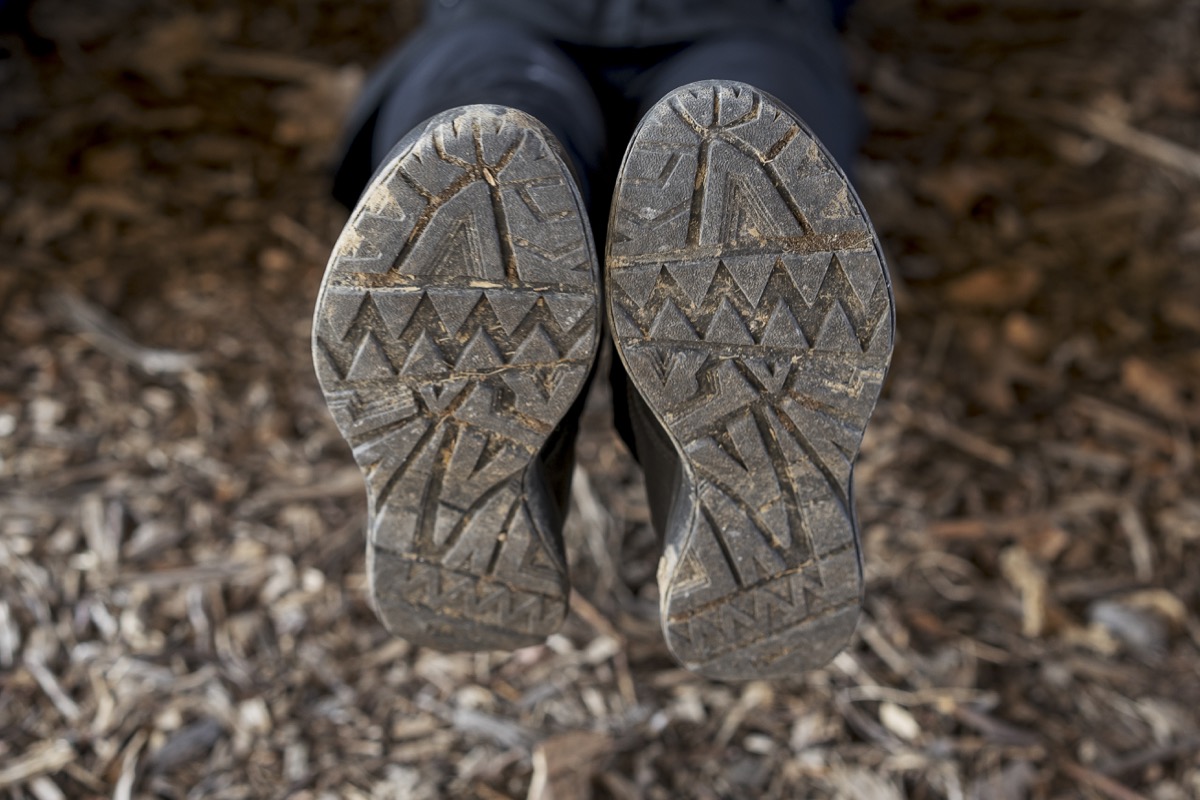
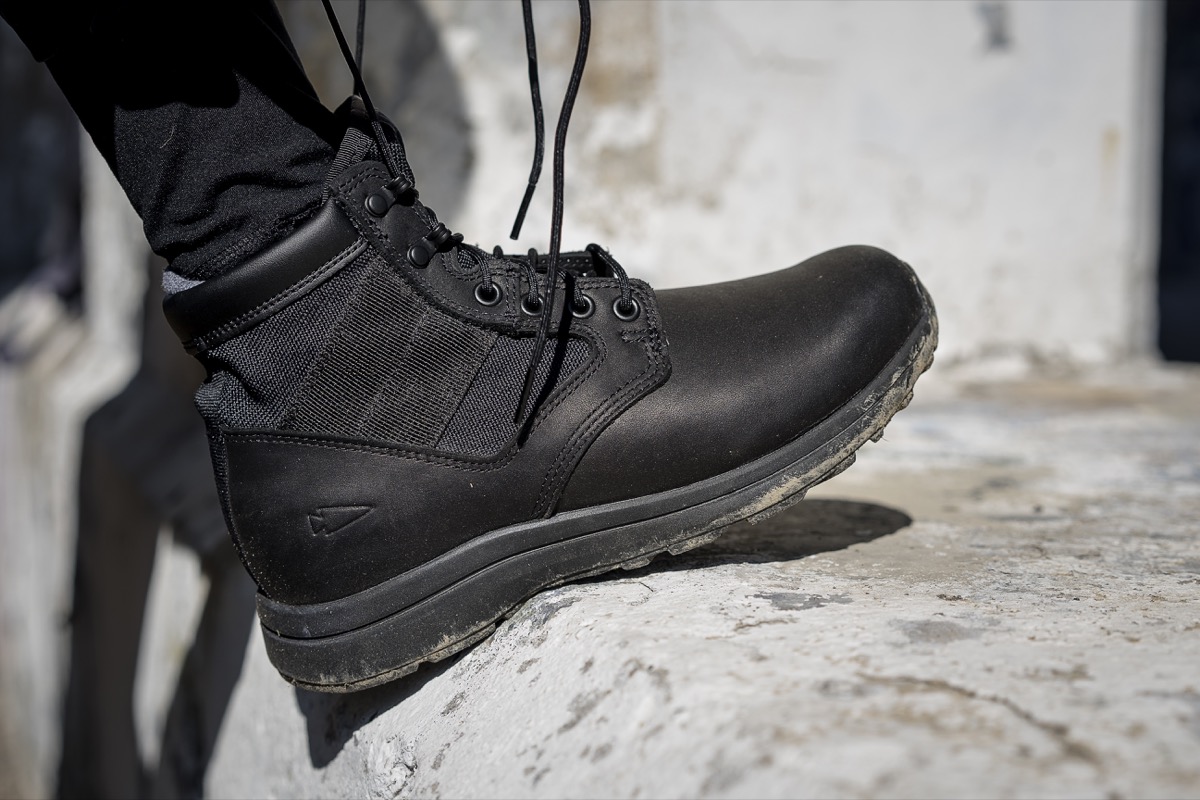
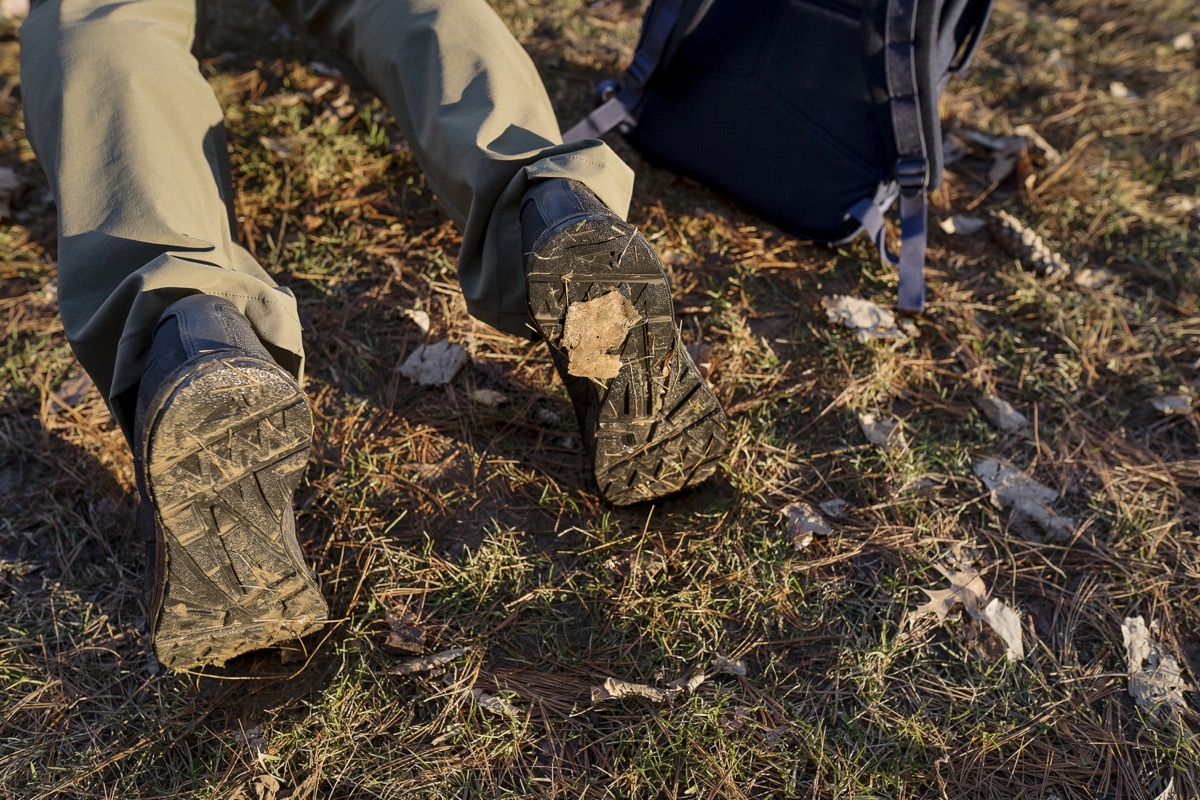
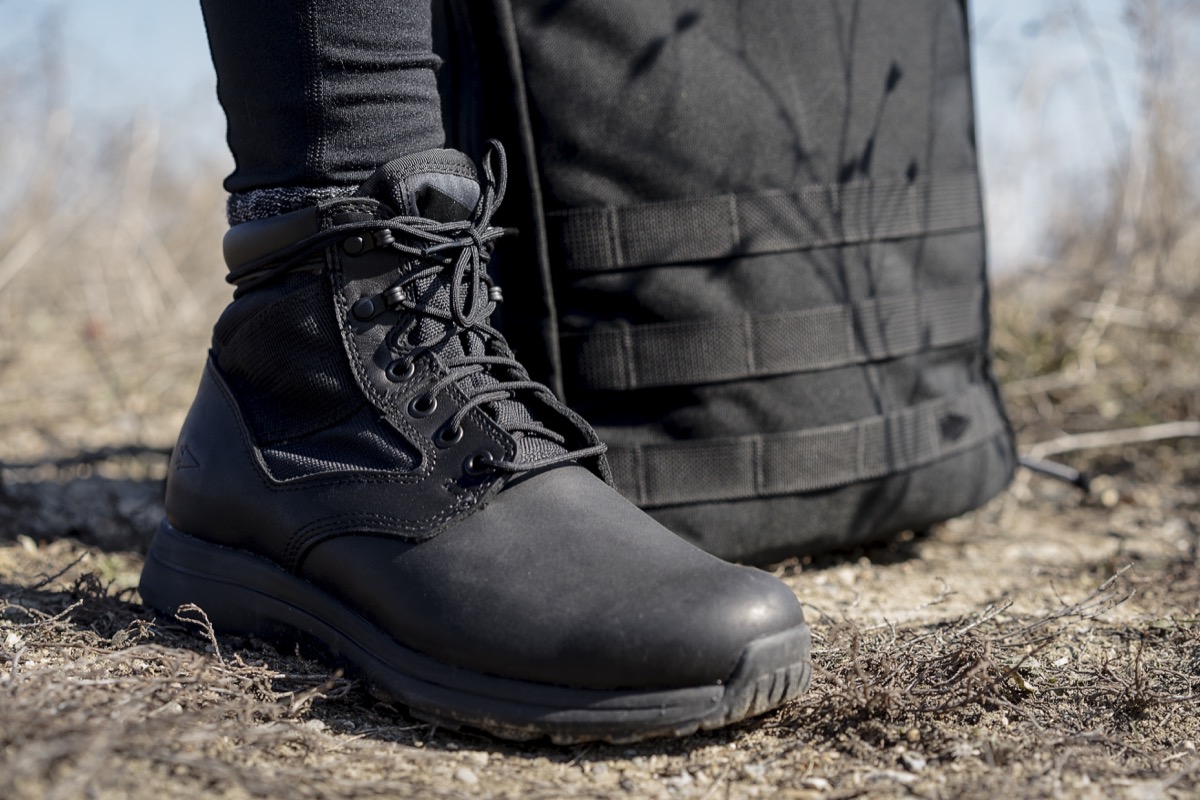
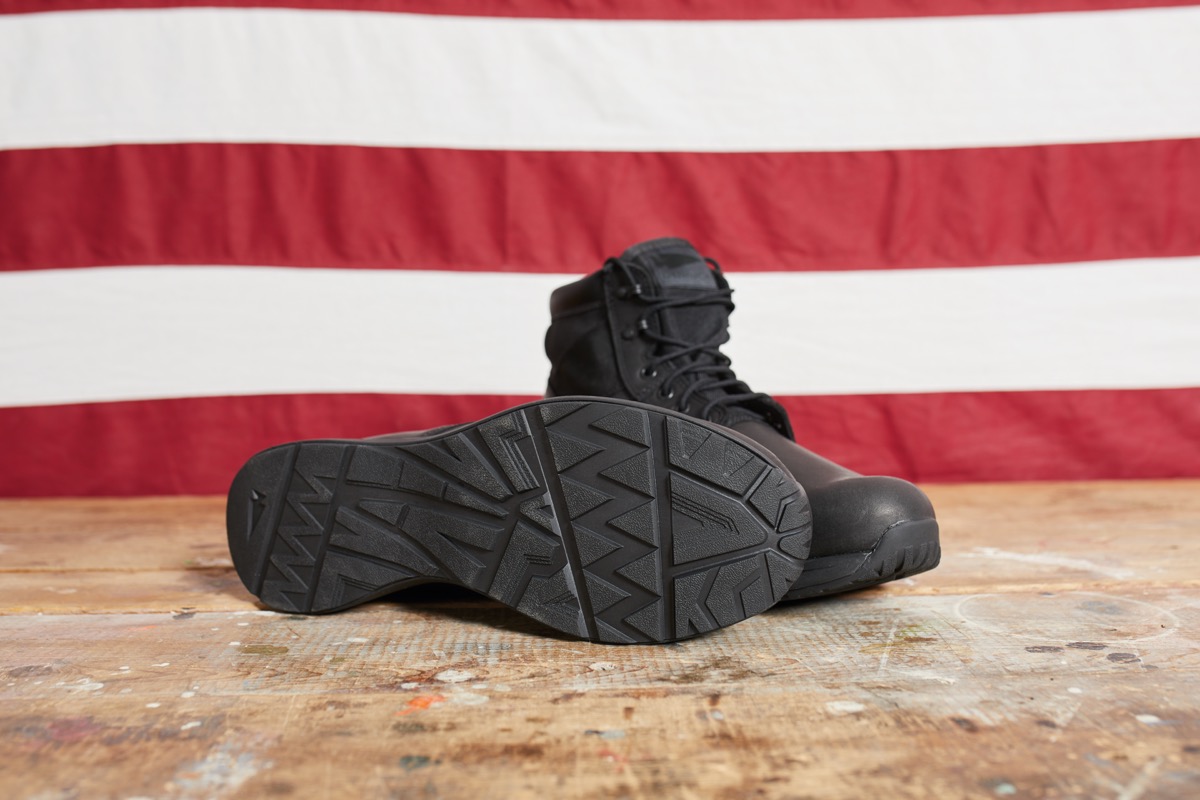


Are the outsoles non-slip to the level of say a “shoes for crews” outsole. They look like it just want to know before I purchase.
Shame they are not AR compliant…
Are you guys coming out with a vs compliant so I can wear in uniform?
We do offer an 8″ Coyote Suede version that is indeed AR 670-1 compliant, check it out: https://www.goruck.com/macv-1-8/
Yes, pre-order is open for a 8″ Coyote Suede version that is indeed AR 670-1 compliant: https://www.goruck.com/macv-1-8/
I would buy these right now, but I need 13’s. Are you out of stock? Or is this a size you do not make?
Are you coming out with a Marine Corps approved version
Might have to look into a pair of these for police patrol use. Nearing time to replace my current pair.
Will you be selling through dealers or strictly online? Is your sizing based off of (or similar to) a common boot/brand? I’d like to try a pair on before I purchase since my boot size varies so much between brands.
I don’t think that the sole will hold up on a rope. I bet if I did a FRI’s down the fast rope they would get chewed uppppp….
I pre-ordered a pair of the suede 8”,but now see they aren’t available. Was the initial order limit met, or was it cancelled?
Will you be offering an 8inch black boot.
Need something in wide.
That link doesn’t work… and I can’t find them anywhere. Please tell me you are actually making AR compliant versions of these
Bad link. Page not found error. FYSA.
How are the boots sized? Do they run true to size? (I wear 9 1/2 street shoes). Do you recommend for 50 mile Star course?
Your coyote suede boots are not in fact AR 670-1 compliant.
你关闭宽尺寸? 你好 ask your manufacture that question (written in Mandarin Chinese because they are from China, Correct?) 谢谢
Not enough ankle support for a true jump boot. Are you guys going to make one with an extra 2″ or so of height?
Oooops! Now I see the 8″ boot. Very nice.
Awesome, glad you like it.
This link is broken. Where can I order the 670-1 compliant version?
Nope still don’t see AR complaints boots. I feel like I’m being lied too
Sorry guys, they do have a break in period, mine have 23 miles of rucking with a 30# plate and a little casual wear; they are still causing hotspots. I bought them to, hopefully, replace my Merrill Burnt Rock mid, sadly they have been discontinued, fortunately I still have two unworn pairs and three in wear rotation.
Do you carry any on a full grown men’s sizes like a size 13.
When will you roll out with bigger sizes ? I wear a 12 or 13 depending on the brand. Hope you have bigger sizes soon I would purchase these.
Is the leather supposed to be water repellent ,I wore mine in the snow last year ,I loved them until the leather started peeling on the toe and sides is the brown suede better option for snow ?
I see ?? everywhere and SF references everywhere. Where are these boots manufactured? Vietnam: fine. P.I.: fine. USA: awesome. Please don’t tell me china. anywhere but china.
Are you coming out with an 8 inch version for Navy? That’s our standard color now.
Are they steel toe
I’m a commuter cyclist I bought a pair of MACv-1’s since I have platform pedals on my bikes they work well together. I also work in a warehouse and spend most of the day on my feet. When I get home and take them off my feet feel like I just woke up. I especially like the large toe box they have more room for my feet to breath and stretch. I’ll 69 in Feb. and plan to keep on with my daily routine
Do you have any steel toe boots?
Can you be more specific about the content of your article? After reading it, I still have some doubts. Hope you can help me.
http://biotpharm.com/# over the counter antibiotics
get antibiotics without seeing a doctor: buy antibiotics from canada – get antibiotics without seeing a doctor
kamagra en ligne: pharmacie en ligne france pas cher – livraison discrète Kamagra
http://kampascher.com/# kamagra en ligne